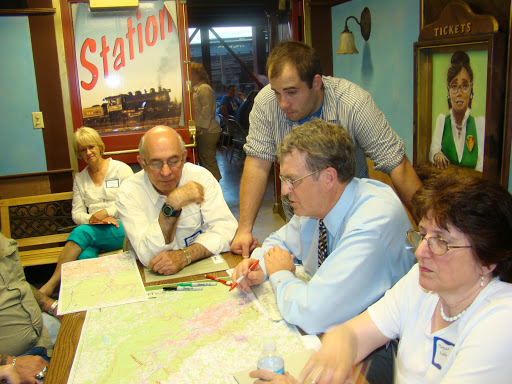Based on the work of
Morris Creek Watershed Association
Southern West Virginia
According to a survey conducted in the first phase of this research project, 85% of Morris Creek Watershed Association (MCWA) volunteers strongly believed that group meetings are held in an efficient and productive manner. MCWA also has a very high turnout at meetings. MCWA keeps meetings to an hour or less every month, accomplishes tasks and allows everyone to get involved. Providing food doesn’t hurt either!

Tested by
Savage River Watershed Association
Western Maryland
Savage River Watershed Association’s (SRWA) meetings were too long because they combined education and outreach, in the form of a guest speaker and with a business meeting that encompassed typical board tasks. SRWA wanted to hold shorter, more efficient meetings to keep members engaged, increase turnout, and facilitate decision-making within the time allotted. SRWA’s planning involved preparation before meetings begin, including the distribution of pertinent information on agenda topics so attendees are informed on issues before the actual meeting. This would cut back on time used for background explanation. Practices during the actual meeting included setting simple but flexible ground rules and allotting specific amounts of time for a particular discussion or issue. This would involve formal time keeping by a designated board member. This member would be responsible for keeping the meeting on task by giving notices of time limits and calling for decisions after a certain amount of time. These practices were implemented by board members before and during meetings, making them the most valuable resource for this practice. Business meeting were shorter (under an hour) and required less volunteer time from board members, allowing more emphasis on the community outreach portion of meetings. The board of directors has adopted this practice as the standard for how business meetings are conducted.
Tested by
Lackawanna Heritage Valley Authority
Northeast Pennsylvania
Lackawanna Heritage Valley Authority (LHVA) selected this practice in order to increase control and productivity of board meetings. The organization and its board deal with a large volume of programs, grants and projects. They needed new ideas to improve efficiency and board member engagement at board meetings. LHVA decided to remind board members of the trial practice and its goals at the beginning of each meeting to keep everyone on track. While there were not any board meetings in 2010 that ran under the one-hour time limit, four meetings were less than one hour and fifteen minutes. An additional four meetings were less than one hour and a half and one meeting ran for one hour and forty minutes. This was the result of reminding the board of the time limitations. Also, board members and LHVA staff became more prepared for board meetings. Both board members and LHVA staff began making notes and discussing issues beforehand in order to make the meeting move along in a shorter, more productive manner. However, more documentation was needed to present to the board before meetings which cost LHVA more staff time and printing costs. It was not practical for an organization with so many projects, events, programs, and grants to limit board meetings to one hour.

“With a more efficient board of directors, made up of citizens that take pride in their service, SRWA can more effectively reach out to the community. There is an increased community awareness of the organization.”
-Savage River Watershed Association
